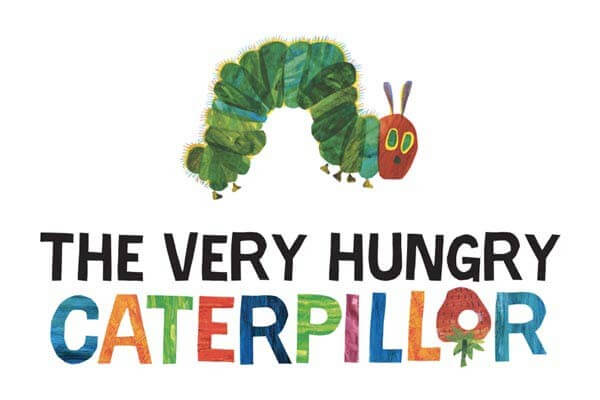How The Saints Found Joy In Suffering
To many, the idea of finding joy in suffering feels paradoxical—how can pain coexist with peace, or loss with love? Yet throughout Christian history, countless saints have lived this paradox with profound serenity and radiant joy. They show that suffering, when united with divine purpose, can be transformed from despair into grace. In today’s world—where mental, emotional, and spiritual pain often feel overwhelming—the saints’ example speaks powerfully to those in New Zealand and beyond who seek meaning in their struggles. Their witness reminds us that joy is not the absence of pain but the presence of God in the midst of it.
The Paradox of Christian Joy
Christian joy is not mere happiness. It is a deep, abiding gladness rooted in faith rather than circumstance. The saints knew that earthly
suffering, though real and painful, can become a channel of grace. When offered to God in trust, it purifies the heart, expands compassion,
and draws one into union with Christ’s own redemptive suffering. In this, they found joy not because pain is good, but because love
transforms it. This joy is resilient—it does not fade with hardship, but matures through it.
The Cross: The School of Joy
For the saints, the Cross was not simply a symbol of agony—it was a school of joy. Jesus Himself embraced suffering out of love, turning the
world’s ultimate instrument of pain into a sign of victory. The saints, following His example, learned to see their crosses as invitations
to deeper communion. They discovered that when we stop fleeing from pain and instead unite it with Christ’s, it loses its power to destroy
us. This truth has inspired generations of believers to carry their burdens not with bitterness but with peace.
Saint Thérèse of Lisieux: Finding Heaven in Small Sufferings
Saint Thérèse of Lisieux, known as “The Little Flower,” found joy not in grand gestures but in everyday sacrifices. She wrote, “Suffering is
the very best gift He has to give us. He gives it only to His chosen friends.” Her “Little Way” teaches that holiness and joy are accessible
through small acts of love and endurance. Thérèse’s fragile health, emotional sensitivity, and spiritual dryness became the soil in which
her childlike trust grew. For modern readers in New Zealand, her example shows that joy is not reserved for those without struggle, but for
those who love through it—whether that means enduring illness, loneliness, or anxiety with grace.
Saint Francis of Assisi: Joy Through Poverty and Pain
Few saints embodied joy amid suffering like Saint Francis of Assisi. Born into wealth, he chose radical poverty and experienced both
physical pain and rejection. Yet his heart sang. He called his suffering “perfect joy”—not because it felt pleasant, but because it freed
him from self-centeredness and bound him to God. When mocked, rejected, or cold, Francis rejoiced that he could share in Christ’s wounds.
This radical joy continues to inspire those in Aotearoa who embrace simplicity, environmental stewardship, and compassion for the poor as
paths to inner freedom.
Saint John Paul II: Redemptive Suffering in the Modern World
In the 20th century, Saint John Paul II became a living testament to joyful endurance. His youth was marked by war and loss; his papacy, by
chronic illness and public pain. Yet his radiant hope drew millions. In his apostolic letter Salvifici Doloris, he wrote that
“suffering unleashes love.” He taught that uniting one’s suffering with Christ transforms it into a force of grace for the world. For people
today—especially in nations like New Zealand that grapple with mental-health challenges and social isolation—his message reframes suffering
from meaningless pain to a sacred participation in God’s love.
Saint Teresa of Calcutta: Joy in the Darkness
Saint Teresa of Calcutta (Mother Teresa) is often remembered for her tireless service to the poor, but her private writings reveal deep
spiritual desolation that lasted decades. Yet she smiled, laughed, and radiated peace. Her joy was not emotional comfort—it was faith in
action. She once wrote, “Joy is prayer; joy is strength; joy is love.” She chose to love even when she felt nothing, proving that joy can be
willed and lived even in interior darkness. Her witness reassures anyone who feels spiritually numb or emotionally exhausted: you can still
love, serve, and shine.
Saint Padre Pio: The Wounds of Love
Padre Pio bore the stigmata—the physical wounds of Christ—for fifty years. His life was marked by pain, persecution, and exhaustion. Yet he
often said, “Serve the Lord with joy.” His deep sense of humour and compassion drew thousands seeking healing. His suffering, rather than
isolating him, became a bridge of empathy. For modern believers, his story illustrates that joy does not erase pain but coexists with it
when rooted in divine friendship. His endurance invites those burdened by chronic illness or emotional wounds to see their suffering as
fertile ground for love.
Finding Joy in the Midst of Everyday Suffering
Not all suffering is heroic or visible. Most people encounter it in hidden ways—stress, loss, financial strain, family conflict, mental
fatigue. The saints remind us that every pain, when accepted with trust, can bear spiritual fruit. Small acts of surrender—offering
frustration, forgiving a hurt, serving despite weariness—create space for grace. In New Zealand’s context, where self-reliance and quiet
endurance are often valued, the saints’ example challenges us to go further: to turn endurance into joyful offering, transforming ordinary
pain into prayer.
The Role of Gratitude and Hope
Gratitude is the gateway to joy in suffering. The saints practiced thanksgiving not only for blessings but for crosses, seeing each trial as
an opportunity to grow in love. Hope, too, anchored them. They knew that suffering is temporary and that joy is eternal. This hope did not
deny pain but transcended it. For anyone walking through grief, depression, or hardship, this perspective shifts the focus from “Why me?” to
“How can this draw me closer to love?”
Practical Steps to Cultivate Joy Amid Struggle
- Unite your pain with a higher purpose. Offer daily difficulties as prayer for others in need.
- Practice gratitude. Each night, list three things—however small—for which you thank God.
- Seek companionship. Joy grows in community; share your struggles with trusted friends or faith groups.
- Serve others. Acts of compassion transform pain into purpose.
- Meditate on the Cross. Spend time reflecting on Christ’s suffering love—it reframes your own trials.
- Accept imperfection. The saints remind us that holiness blooms amid weakness, not apart from it.
The New Zealand Perspective: Healing in a Modern Landscape
In New Zealand’s culture of resilience and openness to holistic wellbeing, the saints’ message of joy through suffering resonates deeply.
The nation’s emphasis on balance—between nature, community, and spirit—aligns with this spiritual truth: even in pain, there is growth and
connection. Integrating faith with mental-health awareness can empower individuals and communities to approach suffering not as failure, but
as invitation to deeper compassion. Churches, counselling centres, and support networks across Aotearoa can draw on the saints’ stories to
foster hope-filled dialogue around suffering and joy.
Conclusion
The saints found joy in suffering not because they loved pain, but because they loved God. Their hearts were anchored in a joy that
suffering could not steal. In every era, they prove that even amid anguish, joy is possible—when suffering becomes love, and love becomes
offering. For anyone seeking peace amid hardship, their example lights the path forward: to embrace the Cross not with despair, but with
radiant trust that beyond every wound lies resurrection.



.jpg)









.jpg)





.jpeg)





.jpeg)



.jpeg)








.jpeg)



.jpeg)

.jpeg)

.jpeg)

.jpeg)




.jpeg)
.jpg)

.jpeg)






.jpeg)
.jpeg)




.jpeg)





.jpeg)


.jpeg)

.jpeg)

.jpeg)

.jpeg)







.jpeg)
.jpeg)
.jpeg)





.jpeg)



.jpeg)






.jpg)
.jpeg)









.jpg)


ulva-Logo.jpg)




.jpeg)



.png)















.png)
























